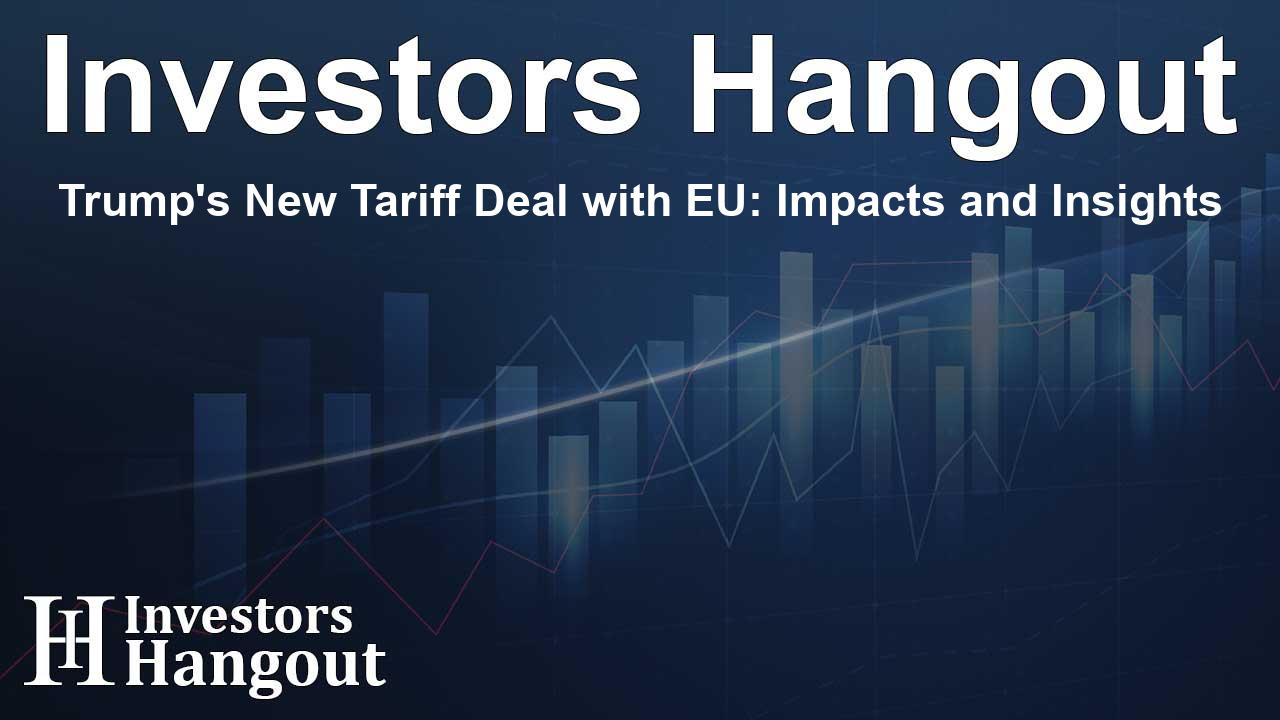Trump's New Tariff Deal with EU: Impacts and Insights

Understanding the 15% Tariff Agreement with the EU
President Donald Trump recently announced a significant tariff agreement with the European Union (EU), establishing a 15% tariff on imports. This deal comes after extended periods of trade apprehension with one of the United States' largest trade partners.
Details of the Tariff Rate
The newly set tariff rate stands as a drastic reduction from the earlier threats of a 30% tariff mentioned in previous discussions in mid-summer and a proposed 20% rate from earlier in the spring. During the announcement, Trump emphasized that the EU has also agreed not to impose any tariffs on U.S. imports, labeling the outcome as "satisfactory for both parties involved."
EU Support and Economic Stability
Reports indicate that European Commission President Ursula von der Leyen supported the new agreement, acknowledging its potential to provide much-needed stability and predictability, essential for businesses operating on both sides of the Atlantic. The collaborative approach is designed to alleviate prior uncertainties and foster growth.
Remaining Tariffs and Future Considerations
Despite this newfound agreement, President Trump has made it clear that the existing 50% tariffs on steel will not be altered. Furthermore, he hinted at the possibility of implementing additional tariffs on pharmaceuticals, particularly affecting products sourced from Ireland, where he has previously alluded to even more imposing tariffs.
Significant Investments and Economic Impact
As a vital aspect of this trade deal, the EU is projected to procure $750 billion worth of energy from the United States and plans to invest $600 billion into the U.S. economy. Such moves are expected to generate substantial economic activity, opening doors for various sectors in the U.S. market.
Military Equipment Purchases
In addition to energy procurement, EU member nations will be acquiring military equipment, although the specific financial figures involved remain undecided. This facet of the agreement indicates a broader cooperative strategy extending beyond just tariffs.
Historical Context and Comparisons
This agreement draws parallels to an earlier trade deal made with Japan, where imports have been placed under a similar 15% tariff. The historical tariff situation underscores that before this agreement, the average import tariff on goods from the EU rested at a meager 1.2%, revealing the new agreement's transformative potential in redefining U.S-EU trade relations.
Addressing Sectors Affected by Unchanged Tariffs
While the agreement presents opportunities, the continuation of the stiff tariffs on steel alongside prospective levies on pharmaceuticals may create hurdles for specific industries. Monitoring how this deal reshapes dynamics globally will be crucial for stakeholders in both regions.
Conclusion on Future Trade Relations
This trade agreement marks a pivotal shift in U.S.-EU relations, navigating a landscape that previously experienced significant turmoil and uncertainty. The reduced tariffs alongside substantial commitments from the EU could serve as a catalyst for economic revival in the United States.
Frequently Asked Questions
What is the main point of the new tariff agreement?
The agreement establishes a 15% tariff on imports from the EU, aimed at providing stability in U.S.-EU trade relations.
Why did Trump push for this tariff deal?
Trump aimed to decrease trade uncertainty and strengthen economic ties with the EU, one of the largest trading partners for the U.S.
What investments are included in the agreement?
The EU plans to purchase $750 billion in energy from the U.S. and invest $600 billion, fostering economic growth.
Are there any tariffs that remain unchanged?
Yes, the 50% tariffs on steel will remain in effect, and Trump hinted at potential tariffs on pharmaceuticals.
How will this agreement affect the U.S. economy?
This agreement is expected to boost economic conditions in the U.S. by increasing stability and fostering new investments.
About The Author
Contact Addison Perry privately here. Or send an email with ATTN: Addison Perry as the subject to contact@investorshangout.com.
About Investors Hangout
Investors Hangout is a leading online stock forum for financial discussion and learning, offering a wide range of free tools and resources. It draws in traders of all levels, who exchange market knowledge, investigate trading tactics, and keep an eye on industry developments in real time. Featuring financial articles, stock message boards, quotes, charts, company profiles, and live news updates. Through cooperative learning and a wealth of informational resources, it helps users from novices creating their first portfolios to experts honing their techniques. Join Investors Hangout today: https://investorshangout.com/
The content of this article is based on factual, publicly available information and does not represent legal, financial, or investment advice. Investors Hangout does not offer financial advice, and the author is not a licensed financial advisor. Consult a qualified advisor before making any financial or investment decisions based on this article. This article should not be considered advice to purchase, sell, or hold any securities or other investments. If any of the material provided here is inaccurate, please contact us for corrections.
